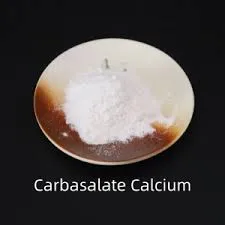- Afrikaans
- Albanian
- Amharic
- Arabic
- Armenian
- Azerbaijani
- Basque
- Belarusian
- Bengali
- Bosnian
- Bulgarian
- Catalan
- Cebuano
- Corsican
- Croatian
- Czech
- Danish
- Dutch
- English
- Esperanto
- Estonian
- Finnish
- French
- Frisian
- Galician
- Georgian
- German
- Greek
- Gujarati
- Haitian Creole
- hausa
- hawaiian
- Hebrew
- Hindi
- Miao
- Hungarian
- Icelandic
- igbo
- Indonesian
- irish
- Italian
- Japanese
- Javanese
- Kannada
- kazakh
- Khmer
- Rwandese
- Korean
- Kurdish
- Kyrgyz
- Lao
- Latin
- Latvian
- Lithuanian
- Luxembourgish
- Macedonian
- Malgashi
- Malay
- Malayalam
- Maltese
- Maori
- Marathi
- Mongolian
- Myanmar
- Nepali
- Norwegian
- Norwegian
- Occitan
- Pashto
- Persian
- Polish
- Portuguese
- Punjabi
- Romanian
- Russian
- Samoan
- Scottish Gaelic
- Serbian
- Sesotho
- Shona
- Sindhi
- Sinhala
- Slovak
- Slovenian
- Somali
- Spanish
- Sundanese
- Swahili
- Swedish
- Tagalog
- Tajik
- Tamil
- Tatar
- Telugu
- Thai
- Turkish
- Turkmen
- Ukrainian
- Urdu
- Uighur
- Uzbek
- Vietnamese
- Welsh
- Bantu
- Yiddish
- Yoruba
- Zulu
नवम्बर . 25, 2024 17:56 Back to list
common veterinary disinfectants
Understanding Common Veterinary Disinfectants Their Importance and Usage
In the realm of veterinary medicine, ensuring a clean, safe, and hygienic environment is paramount for the health and well-being of both animals and their caretakers. Disinfectants play a crucial role in infection control and disease prevention in veterinary practices, clinics, and animal hospitals. This article explores the essential types of common veterinary disinfectants, their mechanisms of action, and best practices for their use.
Types of Veterinary Disinfectants
Veterinary disinfectants can be broadly categorized based on their chemical composition and the pathogens they are effective against. Some of the most prevalent disinfectants used in veterinary settings include
1. Quaternary Ammonium Compounds (Quats) Quats are widely used due to their broad-spectrum efficacy against bacteria and enveloped viruses. They are typically safe for users and animals, making them suitable for frequent use in animal hospitals and clinics. However, they may be less effective against certain pathogens, such as non-enveloped viruses and spores.
2. Chlorine Compounds Sodium hypochlorite, commonly known as bleach, is a strong disinfectant that effectively eliminates bacteria, viruses, fungi, and spores. It is particularly useful in environments where high-level disinfection is required. Caution is necessary, however, as chlorine compounds can be corrosive and may irritate respiratory tracts in both animals and humans. Proper dilution and ventilation are essential when using these compounds.
3. Phenolic Compounds These disinfectants are effective against a variety of microbes, including bacteria, viruses, and fungi. They are often used in veterinary clinics due to their ability to remain active on surfaces for extended periods. However, they may be toxic to some animals, so precautions should be taken to prevent exposure immediately after application.
4. Hydrogen Peroxide Known for its strong oxidative properties, hydrogen peroxide is effective against a wide range of pathogens. It breaks down into water and oxygen, making it environmentally friendly. High concentrations can be corrosive, so proper handling and dilution are important.
5. Acid-based Disinfectants These are particularly effective in managing biofilms and mineral deposits, making them ideal for cleaning surfaces in areas where water sources are present. They can help prevent the buildup of bacteria that may compromise animal health.
Mechanisms of Action
common veterinary disinfectants

The efficacy of disinfectants generally stems from their ability to disrupt cellular processes in pathogens. For instance, Quaternary ammonium compounds function by penetrating the cell membrane and causing cellular lysis, while chlorine compounds oxidize crucial cellular components, leading to microbial death. Understanding these mechanisms is critical for selecting the appropriate disinfectant for specific situations.
Best Practices for Use
1. Surface Preparation Prior to disinfecting, surfaces should be cleaned thoroughly to remove organic matter such as dirt, blood, and tissues. This enhances the disinfectant's effectiveness.
2. Follow Manufacturer Guidelines Always adhere to the recommendations provided by the manufacturer regarding dilution ratios, contact time, and safety precautions. This ensures optimal efficacy and safety.
3. Safety Precautions Disinfectants can pose risks to humans and animals. Wearing personal protective equipment (PPE) such as gloves, masks, and goggles is recommended during application to minimize exposure.
4. Regular Monitoring Facilities should implement routine cleaning protocols and regular monitoring of infection rates to evaluate the effectiveness of the disinfectants used. Adjustments can be made based on observed outcomes.
5. Environmental Considerations Choose disinfectants that have minimal environmental impact and assess any potential risks associated with their disposal, ensuring compliance with local regulations.
6. Training Staff Education and training for veterinary staff on the proper use of disinfectants and understanding the importance of hygiene practices are vital in preventing the spread of infections.
Conclusion
In conclusion, common veterinary disinfectants are essential tools in maintaining health and preventing disease in veterinary settings. By understanding the different types of disinfectants available, their mechanisms of action, and best practices for usage, veterinary professionals can create a safer environment for animals and staff alike. Continuous education and adherence to established guidelines will enhance overall effectiveness in infection control and contribute to better health outcomes in animal care.
-
Guide to Oxytetracycline Injection
NewsMar.27,2025
-
Guide to Colistin Sulphate
NewsMar.27,2025
-
Gentamicin Sulfate: Uses, Price, And Key Information
NewsMar.27,2025
-
Enrofloxacin Injection: Uses, Price, And Supplier Information
NewsMar.27,2025
-
Dexamethasone Sodium Phosphate Injection: Uses, Price, And Key Information
NewsMar.27,2025
-
Albendazole Tablet: Uses, Dosage, Cost, And Key Information
NewsMar.27,2025













